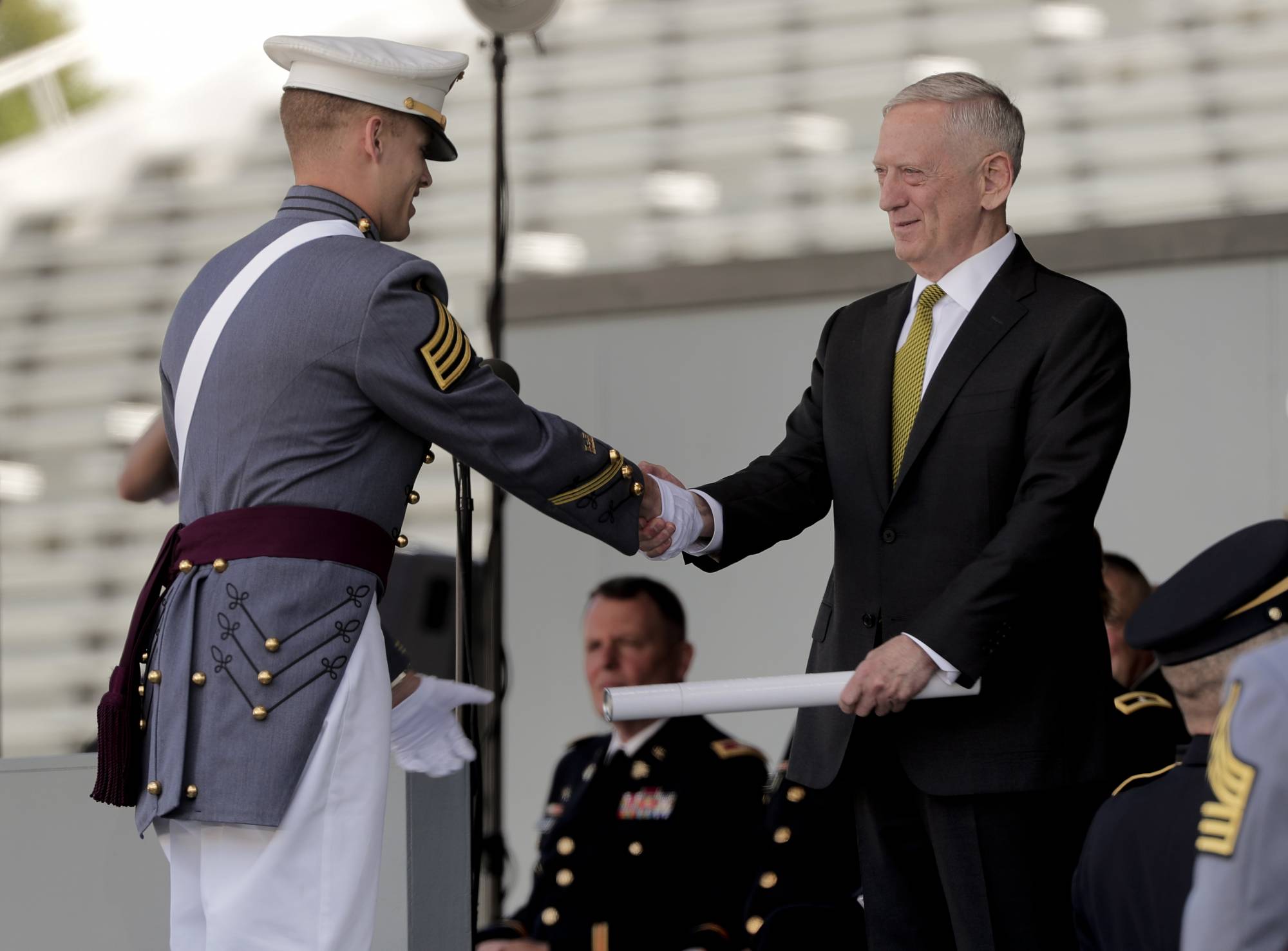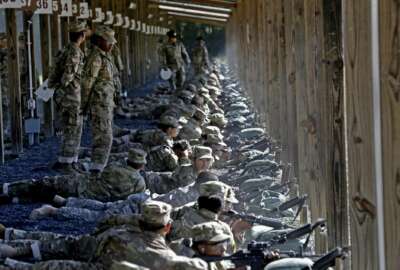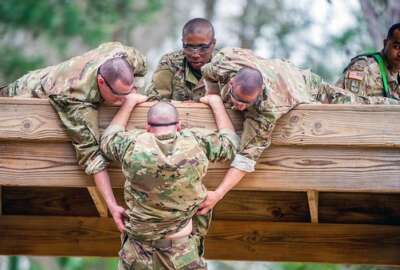
Army pilots using AI to streamline selection boards
Army command selection boards in the future may depend on computer automated scoring of past evaluations.
Army command selection boards in the future may depend on computer automated scoring of past evaluations. Lt. Col. Kristin Saling, director of the innovation cell at the Army Human Resources Command (HRC), said her team used a natural language computing program to input thousands of evaluations which can then be scored and used for selection boards.
The program is part of an initiative to use artificial intelligence to save time on the selection process. It will be tested out in a pilot program to see how the results measure up against the results of a traditional selection board.
“Instead of convening a board of I don’t know how many general officers to go through and review these files over the course of three weeks, we pull them in for about three days, and have them do quality control on that selection process,” Saling said during a webinar hosted by Defense One.
In preparing for the actual pilot program, Saling said her team set up a system of dry runs.
“We have trained the model on a set of about 140,000 evaluations, and we will be scoring/rank ordering about 1,800 records using an ensemble model that takes into account evaluations and a number of other criteria, with each record comprised of multiple evaluations and other data,” Saling said in an email.
In the current process, a selection board made up of Army officers physically goes to Fort Knox, Kentucky. They meet for three weeks and review all the evaluations and paperwork in a candidate’s file. The board then decides whether the candidate should be promoted or selected for command.
Saling’s team had the job of figuring out how to use AI to reduce the workload of the selection board.
“We are using natural language processing techniques to apply scores to documents in personnel files in concert with guidance from Army Human Resources Command and the Secretariat,” Saling said.
Saling works with a team of eight, including one member who she said has expertise in natural language computing. Her team partnered with HRC’s Command Management Division and the G-1’s board Secretariat to create the programs that will be used for selection boards. The Department of the Army Secretariat conducts all centralized active component, reserve component, officer and non-commissioned officer selection boards. The Secretariat conducts over 80 boards a year. It includes all officer promotion boards from the grade of chief warrant officer three right up to major general.
This year, the Army will use the pilot program side by side with its traditional selection boards. The results of the pilot program will be compared with the results of the standard selection boards, and they will then evaluate how to proceed in the following year.
“If everything goes well, we’re going to put it into production next year,” Saling said.
The program will also be used in a pilot for invitations to Command Assessment Boards (CAP). The CAP program started three years ago, as a system to evaluate officers who were being considered for promotion in a more hands-on environment. Candidates go to Fort Knox for in-person assessments that focus on their knowledge and skills. Invitations to CAP currently come from a separate selection board that screens candidates. If the AI pilot program is successful, invitations could be computer generated, and eliminate the need for a separate selection board.
“The team will evaluate whether or not this process can effectively replace the pre-CAP CSL board as a method of inviting personnel to CAP,” Saling said.
The Army put the CAP program in place to address what it saw as deficiencies in the command selection process, and an over-reliance on evaluations written by candidates’ past supervisors.
Saling also sees uses for the program that go beyond the selection boards.
“We will also have a tool that can be tailored and applied to other selection boards, such as the Senior Service College board, and applied to recruiting personnel with strong files to selective and nominative programs,” she said.
Copyright © 2025 Federal News Network. All rights reserved. This website is not intended for users located within the European Economic Area.
Alexandra Lohr, a former staff member, covered the Defense Department for Federal News Network until September 2023.





